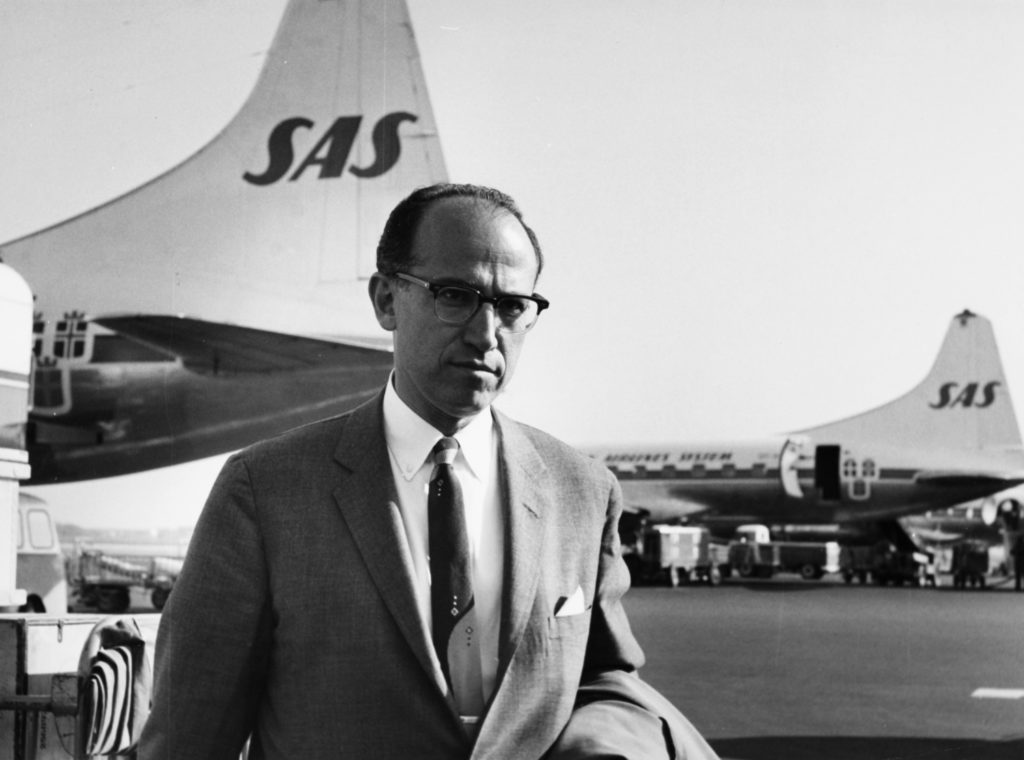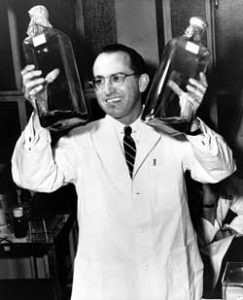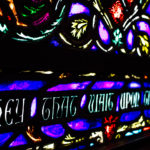Salk Found Polio Cure at Pitt

Public Domain Photo
Dr. Jonas Salk at Copenhagen Airport.
words: Dan Priore
The scene was surreal.
Families eagerly awaited the medical press conference, listening patiently by radios to know the instant the news had been confirmed, according to an account in The New York Times. Crowds huddled around. Cheers of joy soon broke out.

Public Domain Photo
Salk and his team administer the polio vaccine to patients on February 26, 1957, in the Commons Room of the University of Pittsburgh’s Cathedral of Learning.
Dr. Jonas Salk had discovered a vaccine for polio.
It was April 12, 1955, and much of the country and scientific community was concerned and panicking over the polio epidemic. It had been reported that more than 50,000 children in the United States had been infected with the disease. Many had died, and even more were severely paralyzed, forcing them to use an iron lung — a large metal contraption made of metal that helped people breathe.
There was no defense against it until Salk and his team of researchers arrived at the University of Pittsburgh in Oakland in 1951 to search for answers.
The process was certainly not easy. Salk worked 16 hours a day, seven days a week, according to an article in the Pittsburgh Post-Gazette. In the UPMC labs, Salk refused to hold staff meetings and rarely showed much of an effort to inspire his team. It can only be imagined the doctor hoped all the children suffering in the once Oakland Municipal Hospital was enough motivation to find a cure.
Around 1.8 million children had been tested with different vaccines before Salk came around, but none had proven effective. A breakthrough came once Salk’s research found a new way to kill the virus: a formaldehyde solution as known as formalin.

Public Doman Photo
Salk at the Univeristy of Pittsburgh, where he developed his vaccine
Over the next few years, the vaccine was enhanced. About 1 million people went through a trial run following the 1955 announcement. The results proved just how safe the newest vaccine version was.
Eventually, the number of cases dropped to only a handful each year. According to The New York Times, just over 10 years later in 1969, not one death was reported in the United States because of polio.
Even though Salk was not liked among his peers — and was known for not handing out proper credit to all the researchers he spent hours working with in the UPMC labs — he was adored by the public.
The Digs, a photo archive collection from the Pittsburgh Post Gazette, says on the afternoon of April 16, 1955, a crowd of about 500 Pittsburghers, including children, gathered at the airport — waiting for Salk’s plane to land.
They had to see their hero come home.
 Previous Post
Previous Post Next Post
Next Post